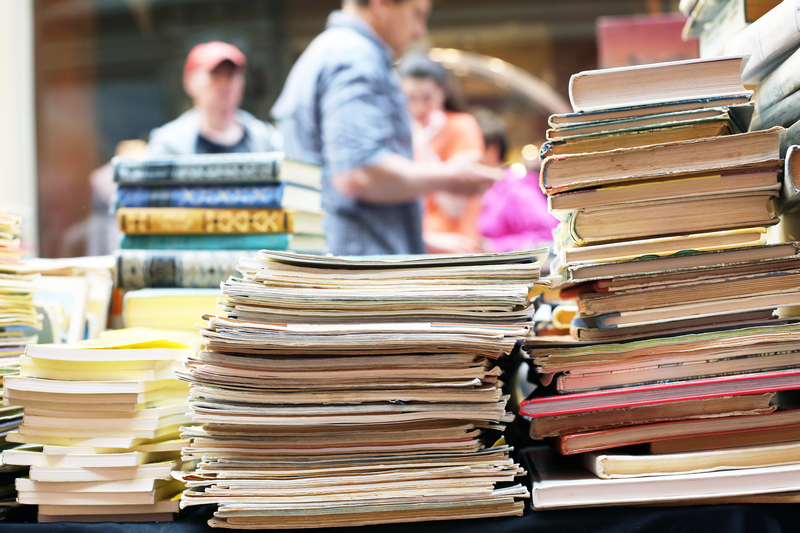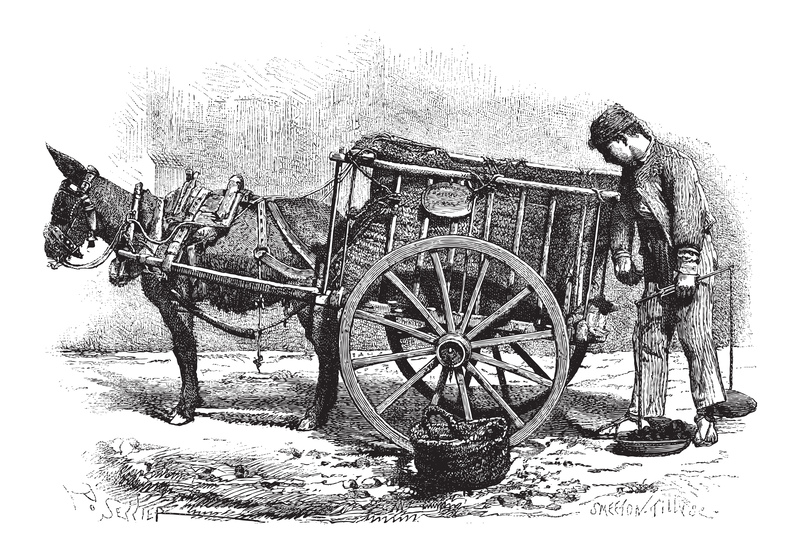Eco-Friendly Upcycling Hacks: Give Your Junk a Second Life
Living sustainably and minimizing environmental impact has become a central theme in many households. The world is brimming with products destined for the landfill, but with a little creativity and mindfulness, you can transform your old, unwanted items into functional and beautiful treasures. Welcome to the exciting realm of eco-friendly upcycling hacks, where giving junk a second life doesn't just save you money--it also helps the planet.
What is Upcycling?
Upcycling, sometimes called creative reuse, is the process of repurposing waste materials, old products, or unwanted items into new products of higher quality or value than the original. Unlike recycling, which breaks down materials to make new ones, upcycling focuses on a transformation that preserves and enhances the original form.
- Upcycling is cost-effective and helps reduce environmental waste.
- You conserve valuable resources and lessen the demand for new products.
- It's a chance to unleash your inner artist and make something unique!

Why Choose Eco-Friendly Upcycling Hacks?
Eco-friendly upcycling hacks not only provide a sustainable way to reduce landfill waste but also inspire creativity, promote resourcefulness, and encourage a deeper appreciation for the things we often discard. Embracing upcycling means reducing your carbon footprint while also adding a personal touch to your home and lifestyle.
- Environmental Benefits: Cut down on waste and pollution.
- Money-Saving: Turn trash into beautiful treasures at almost no cost.
- Unique Decor: Upcycle junk into personalized and stylish items.
- Skill-Building: Develop practical DIY and crafting skills.
- Community Impact: Inspire others and contribute to a more sustainable world.
Essential Upcycling Tools and Materials
Before you dive into eco-friendly upcycling projects, gather a few basic tools and supplies to set yourself up for success. Many of these items can even be upcycled themselves!
- Scissors and precision knives for cutting materials
- Glue guns and adhesives
- Screwdrivers and pliers
- Paints, brushes, and varnishes for finishing touches
- Sandpaper to smooth rough edges
- Measuring tape or ruler
- Reclaimed materials like wood, metal, fabric, glass jars, and old furniture
Top Eco-Friendly Upcycling Hacks to Try Today
1. Turn Old Jars Into Stylish Storage
Empty glass jars don't have to pile up in your recycling bin. Instead, upcycle them into chic storage solutions for your kitchen, bathroom, or craft space.
- *Paint lids and jars or decorate with ribbons, labels, or chalkboard paint.*
- *Use as spice jars, snack containers, or desk organizers.*
- *Transform larger jars into flower vases or terrariums.*
2. Upcycle Wooden Pallets into Furniture
Wooden shipping pallets are often discarded after a single use but can be upcycled into functional furniture with minimal effort.
- *Create rustic coffee tables, bookshelves, or sofa bases.*
- *Sand and stain for a polished look or paint for a pop of color.*
- *Combine multiple pallets for larger projects like outdoor benches or garden planters.*
3. Transform T-Shirts Into Reusable Bags
Don't toss those old, faded T-shirts! Turn them into reusable shopping bags with just a bit of cutting and sewing.
- Cut off sleeves and the neckline, and sew the bottom shut for an instant bag.
- Decorate with fabric paint, patches, or tie-dye techniques for flair.
- Use these upcycled bags to replace single-use plastic bags on grocery trips.
4. Repurpose Broken Dishes into Mosaic Art
If you've ever broken a ceramic plate or mug, don't throw away the pieces. Upcycle shattered dishes into beautiful mosaic art or garden stepping stones with a little patience and strong adhesive.
- Arrange shards into patterns on picture frames, flower pots, or mirrors.
- Fill in gaps with grout for a professional finish.
- Create unique gifts or conversation pieces for your home.
5. Give Old Furniture a Makeover
Transform tired furniture into something fabulous. Eco-friendly furniture upcycling hacks can save hundreds of dollars and keep bulk waste out of the landfill.
- Sand and repaint wooden chairs, dressers, or tables in bold new colors.
- Swap out hardware for a modern update.
- Reupholster chairs or stools with cheerful, upcycled fabrics.
6. Reimagine Tin Cans as Planters
Aluminum cans from beans, soup, or vegetables are perfect for DIY plant holders. You can upcycle tin cans into herb gardens, desk organizers, or lanterns.
- *Remove labels, clean, and paint cans to match your decor.*
- *Use a nail to add drainage holes for plants.*
- *Hang grouped planters on a wall or display individually.*
7. Old Windows Into Charming Photo Frames
Discarded windows, with their weathered wood and vintage glass, are ideal for stylish multiphoto collages and decor.
- Sand and paint or stain the frame for a fresh look.
- Insert favorite photos, fabric, or pressed flowers behind the glass.
- Hang horizontally or vertically as statement wall art.
Eco-Friendly Upcycling Hacks by Material
Plastic
- Bottle Planters: Cut plastic bottles in half to create seed starters or outdoor planters.
- Bird Feeders: String bottles with wire or twine, add perches, and fill with birdseed.
- Pencil Holders: Decorate and use for organizing offices or classrooms.
Glass
- Decorative Lanterns: Paint or frost glass jars, add tea lights or fairy lights inside for a magical glow.
- Soap Dispensers: Attach a pump to the lid of a jar for creative kitchen or bathroom dispensers.
- Hanging Vases: Wrap jars with wire or twine and hang from hooks or tree branches.
Fabric
- Quilts & Throws: Stitch scraps from clothing or linens into cozy blankets.
- Rag Rugs: Braid or crochet strips of fabric to make durable and colorful floor coverings.
- Pillow Covers: Use shirt backs or pant legs as unique and sustainable pillowcases.
Wood
- Shelves: Turn leftover planks or pallets into wall shelves with brackets.
- Wall Art: Combine painted scrap wood for abstract or rustic decor.
- Planters: Build small boxes for herbs, succulents, or flowers.
Creative Upcycling Ideas for Every Room
Kitchen
- Use old mugs as utensil holders or mini planters.
- Convert tin cans into rustic utensil caddies with rope handles.
- Repurpose wooden crates as produce storage bins or pantry organizers.
Living Room
- Transform ladders into stylish blanket racks or shelving units.
- Use fabric remnants for throw pillow covers or slipcovers for ottomans.
- Make magazine racks out of old vinyl records or wire baskets.
Bathroom
- Upcycle glass bottles into toothbrush holders or soap dispensers.
- Hang decorative baskets on the wall for extra towel or toiletry storage.
- Make a bath mat by weaving together strips of old towels.
Garden & Outdoors
- Old boots or shoes become quirky planters for flowers and herbs.
- Pallets can be stacked to make compost bins or raised garden beds.
- Flip broken chairs upside down and use as trellises for climbing plants.
Tips for Successful Eco-Friendly Upcycling
- Start Small: Begin with simple upcycling projects before tackling complex ones.
- Plan Ahead: Visualize your finished product and gather all materials before you start.
- Be Safe: Use proper tools and caution, especially when working with glass, metal, or power tools.
- Get Inspired: Browse online communities, social media, and thrift stores for upcycling ideas.
- Stay Green: Use eco-friendly paints, adhesives, and finishes to keep your projects truly sustainable.
- Share and Collaborate: Organize upcycling workshops with friends or neighbors to exchange ideas and resources.
Where to Find Materials for Upcycling
Don't have a stash of leftover materials? No problem! There are plenty of ways to source upcycling materials without buying new.
- Thrift stores and garage sales
- Community freecycle meetups and swap events
- Local markets--ask for discarded items at the end of the day
- Workplaces or construction sites (with permission!)
- Your own attic, basement, or backyard
By actively seeking out used materials for your eco-friendly upcycling hacks, you'll give new purpose to items that would otherwise be thrown away.
Upcycling as a Family or Community
Upcycling isn't just for solo DIYers. It's a wonderful way to engage your family, children, or local community in sustainable action. Organizing group upcycling projects teaches valuable lessons about resourcefulness, teamwork, and creativity.
- Host a creative upcycling party where everyone brings an item to transform.
- Participate in community clean-up days and repurpose what's collected.
- Collaborate on art installations or murals using recycled materials.
By making eco-friendly upcycling hacks a fun, collaborative activity, you inspire lasting change and foster a sense of responsibility for our shared environment.
Success Stories: Inspiring Real-World Upcycling Projects
Need more convincing? Here are a few real-world upcycling transformations that have made a huge impact:
- Housing from Shipping Containers: Some innovative communities have transformed old containers into affordable, stylish homes.
- Bottle Brick Schools: In parts of the world, discarded plastic bottles filled with sand are used as building blocks for walls and playgrounds.
- Designer Clothing from Waste: Many fashion labels now create high-end collections using fabric scraps and repurposed materials.
- Nonprofits Turning Wheels: Organizations upcycle old bicycles for disadvantaged children or community mobility programs.

Frequently Asked Questions About Upcycling
What is the difference between upcycling and recycling?
Recycling breaks down materials to their base form (e.g., melting plastic or glass) before making new items. Upcycling, on the other hand, creatively transforms waste or junk into new, sometimes improved, items without breaking them down.
Is upcycled furniture as durable as new furniture?
Often, vintage or upcycled furniture is sturdier than modern, mass-produced pieces. With proper technique and finishing, upcycled items can be strong and long-lasting.
Where can I sell my upcycled creations?
Try online platforms like Etsy, Facebook Marketplace, or local craft fairs. Sustainable products are in high demand, and many people love buying unique, upcycled goods.
How do I start if I have no experience?
Start with easy projects, like painting jars or making T-shirt bags. There are countless online tutorials and communities to guide and inspire you through your eco-friendly upcycling journey.
Conclusion: Join the Eco-Friendly Upcycling Revolution
Upcycling isn't just a passing trend--it's an essential, creative solution to our environmental challenges. By embracing eco-friendly upcycling hacks, you're transforming your junk into treasures, reducing your footprint, and fostering a greener future for everyone. Every time you upcycle an item, you write a new story for it while also PROTECTING the planet. So, roll up your sleeves, gather your materials, and start giving your junk a second life today!
Ready to get started? Share your favorite upcycling hacks below, and inspire others to join the movement for a more sustainable world!
